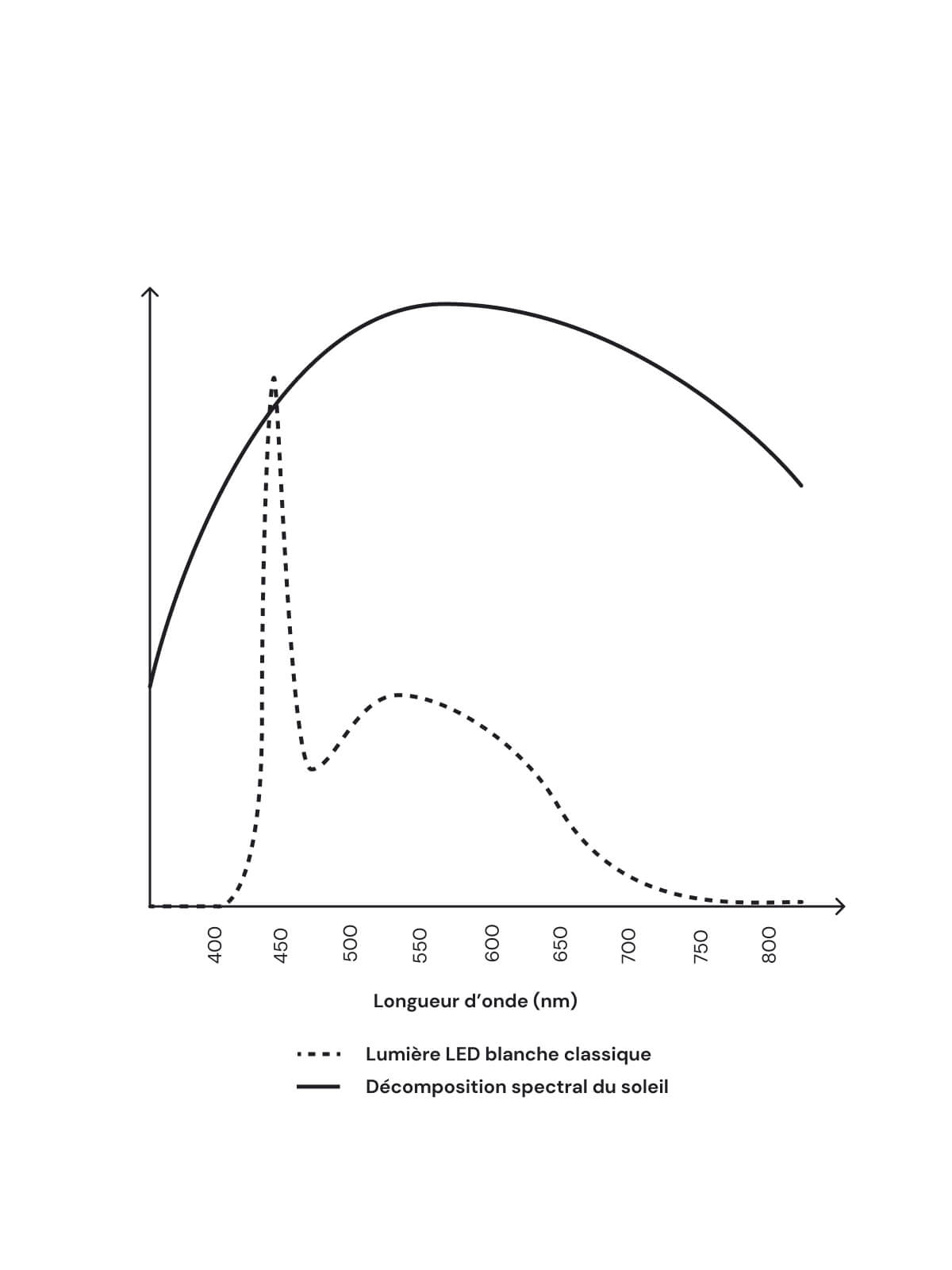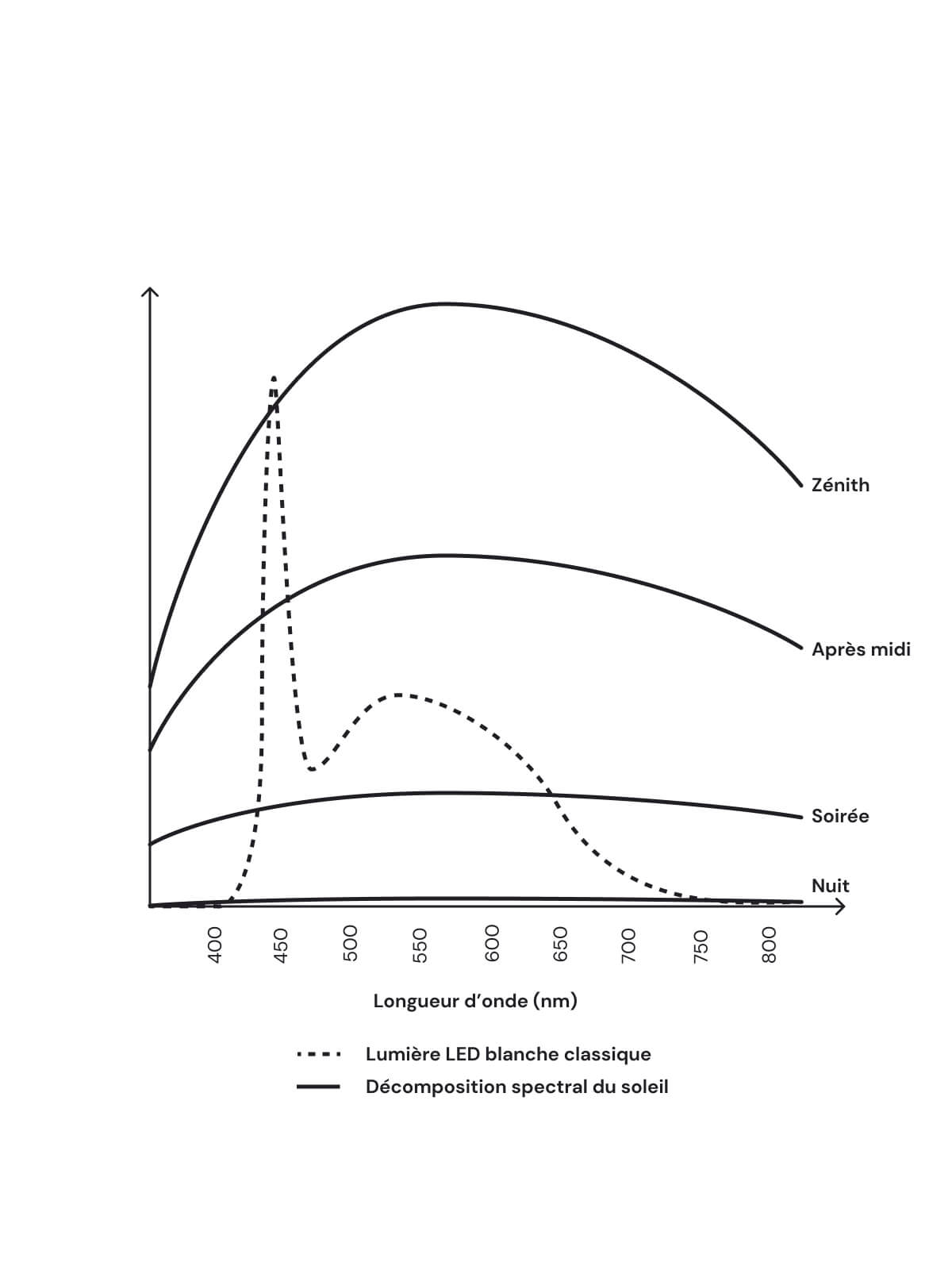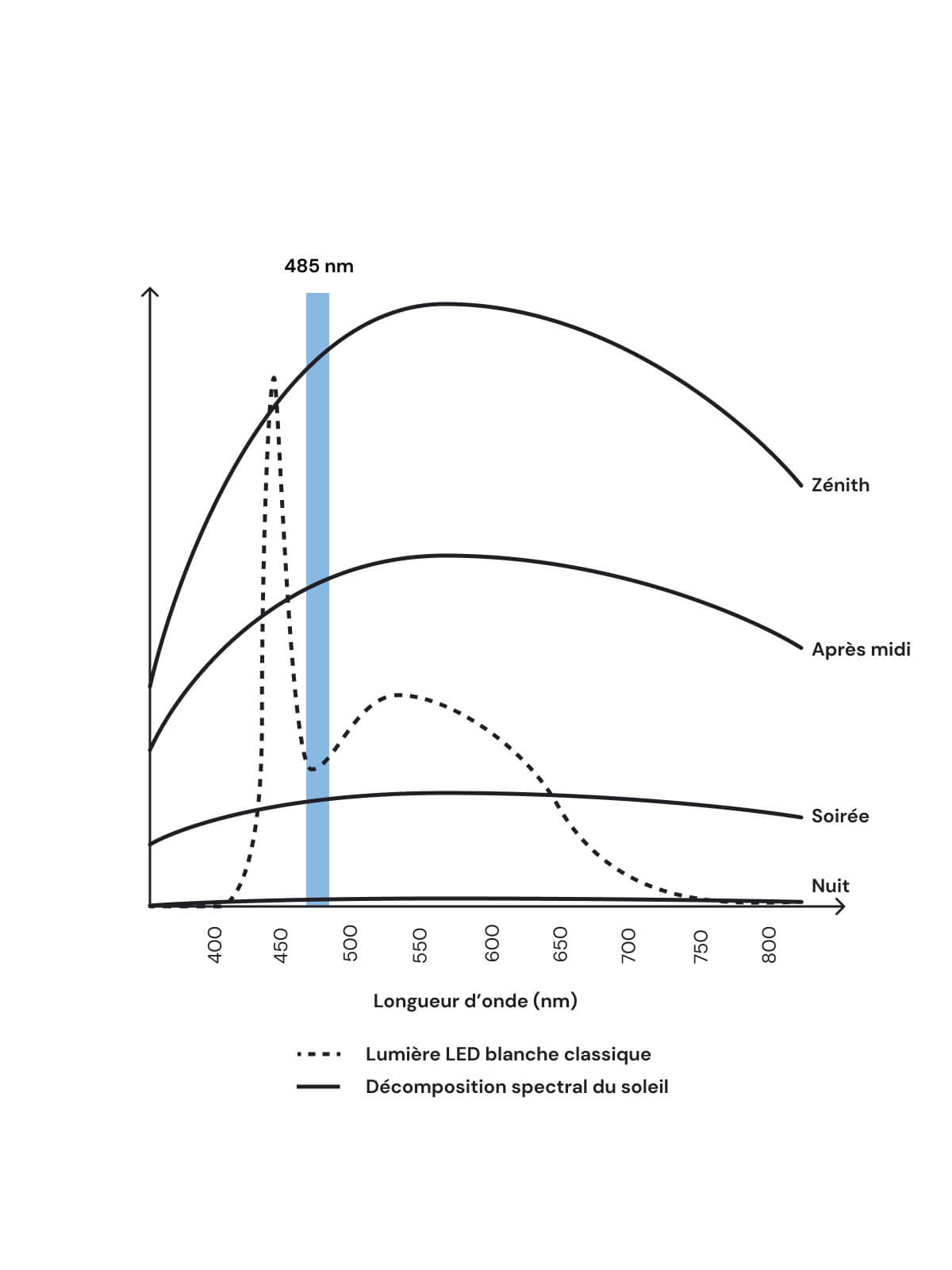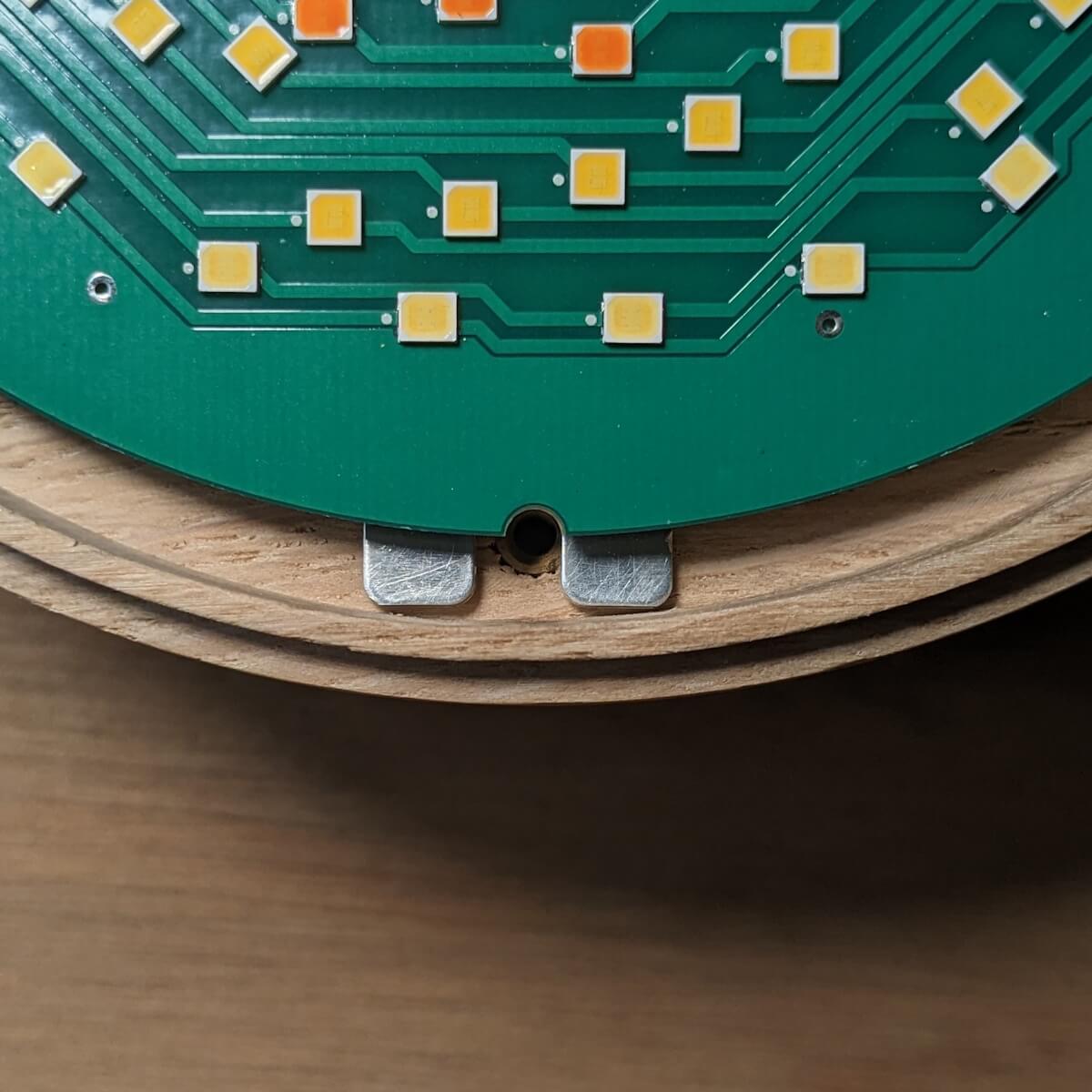The circadian cycle and light
Welcome to the fascinating world of the circadian cycle
Imagine an internal clock, hidden deep in our brain, which discreetly controls our energy, our sleep, and even our mood. This is the circadian rhythm, a natural cycle of approximately 24 hours that influences almost everything in our body.
But why is it so important? Well, this biological clock is like a guide that helps us navigate the ebb and flow of the day. It tells us when it's time to wake up, eat, work, and even relax and sleep. By following this rhythm, we can live in a more harmonious and healthy way.
So, let's embark together on this captivating journey to understand how this mysterious rhythm works and how we can harmonize it with our busy modern lives.
Ready for adventure? Let's go!

Place Jamy for a first fun explanation
Imagine a clock hidden in each of our cells
In the ❤️ of the brain, a little corner called the hypothalamus.
It is she who acts silently and gives rhythm to our life. It controls when we feel alert and energetic, when we are hungry, and even when we are ready to dive into the arms of morphea.
This biological clock works through a complex set of molecules and neurons that interact to regulate our sleep cycles, our body temperature, and much more. It's as if we have our own internal conductor, ensuring that every function of our body plays its part at the right time.
But how does this mysterious clock work?
It follows a 24-hour cycle, known as the circadian rhythm, which is influenced by signals from our environment, particularly light. When daylight hits our eyes, it sends a signal to our clock to wake us up and energize us. And when darkness falls, it tells us it's time to slow down and prepare for a good night's sleep.
By better understanding this internal clock, we can learn to live in harmony with our natural rhythms, improving our health, energy and overall well-being. So, are you ready to synchronize your watches?
A musical score more impressive than Mozart
Have you ever wondered why you feel sparkling with energy some days, and completely exhausted other days? Or why some nights you fall into a deep sleep, while other nights you count sheep until dawn?
When it is well regulated, we feel in tune with the world around us, balanced and full of vitality. But if it goes out of whack – perhaps due to stress, changes in habits, or inappropriate exposure to light – our general well-being can suffer.
An out-of-sync circadian rhythm can lead to sleep disturbances, difficulty concentrating, low energy, and even mood swings. This is why it is essential to understand and respect this natural rhythm. By aligning our lifestyle with our body clock, we can not only improve our physical health, but also our emotional and mental well-being.
The workings of the biological clock
Our biological clock is a sophisticated network of hormone signals and reactions. This clock, much more than a simple time counter, is a complex and dynamic system that synchronizes with the light and dark cycles of our environment.
Each cycle of this clock lasts approximately 24 hours, but it is unique to each individual. Some of us are natural early risers, while others are night owls. This variability reflects the beauty of our biological diversity. But what's really fascinating is the ability of our body clock to self-regulate and reset itself. Light, especially natural sunlight, plays a key role in this resetting process.
We have found what really impacts our biological clock is the light emitted by the sun.
But how is this cycle maintained?
The answer lies in light 💡
Exposure to natural light during the day helps keep our body clock aligned with the external environment. Conversely, darkness signals to our bodies that it is time to rest and regenerate. It's a delicate balance, influenced by our planet's cycles of light and darkness.
Circadian light helps resynchronize this clock
It is a light component that is also called the melanopic ratio. We will come back to this.
Light is much more than just an element that allows us to see. To truly understand what is hidden behind the light, we must take a detour through the sun and its light and through white light.

Come on Jamy, it’s your turn!
How does the morning light wake us up?
The room slowly lights up, and with it, the awakening process. The sun's rays are positioned on our eyelids. They send a signal to our brain: melatonin, the sleep hormone, discreetly withdraws, giving way to cortisol, the wakefulness hormone bringing with it energy and clarity of mind. It's the start of a new day
The day to maintain energy and concentration
As the sun continues its course, natural light unfolds. It is an invisible but powerful force that influences our well-being and efficiency throughout the day.
This constant flow of energy, maintains our level of concentration to clarify our thoughts and keeps us awake and alert. It is also a natural remedy against lethargy : light is a natural antidote against low morale.
In the evening, the light accompanies us to sleep
As the sun sets and the light softens, our active day begins to transition into a leisurely evening. This light transition plays a key role in preparing our body for nighttime rest.
The gradual reduction in natural light sends a message to our body clock that it's time to slow down and prepare for night. As night falls, our bodies begin to produce melatonin, the sleep hormone, gently inviting us to relax and fall asleep.


The sun offers us a rich and varied light spectrum. A true rainbow of colors that when mixed together create this bright white light. The image opposite illustrates the striking difference between natural sunlight and the more limited light of conventional LEDs. The spectral diversity of the sun is much richer.

The color of sunlight changes throughout the day: from an intense blue in the morning to a soft orange, even pink, in the evening. This natural variation plays a key role in regulating our biological clock.

It is thanks to a specific color band, known as the melanopic ratio, that our brain receives and interprets these light signals. It is very undistinctive to the naked eye, making it almost invisible. But it is this information that is processed by our brain to manage our biological clock.
The melanopic ratio is a measure that assesses the impact of different wavelengths of light on our circadian system. It indicates to what extent a light source can influence the production of melatonin, the hormone regulating our sleep cycle.

Conventional LEDs do not follow this natural pattern. They tend to emit too much blue light in the evening and not enough during the day, thus disrupting our circadian rhythm.

Faced with this observation, we created a solution that respects the natural rhythm of light. Our project aims to restore balance, providing light adapted to every moment of the day. For you, for your well-being. It was nothing !
The sun offers us a rich and varied light spectrum. A true rainbow of colors that when mixed together create this bright white light. The image opposite illustrates the striking difference between natural sunlight and the more limited light of conventional LEDs. The spectral diversity of the sun is much richer.
The color of sunlight changes throughout the day: from an intense blue in the morning to a soft orange, even pink, in the evening. This natural variation plays a key role in regulating our biological clock.
It is thanks to a specific color band, known as the melanopic ratio, that our brain receives and interprets these light signals. It is very undistinctive to the naked eye, making it almost invisible. But it is this information that is processed by our brain to manage our biological clock.
The melanopic ratio is a measure that assesses the impact of different wavelengths of light on our circadian system. It indicates to what extent a light source can influence the production of melatonin, the hormone regulating our sleep cycle.
Conventional LEDs do not follow this natural pattern. They tend to emit too much blue light in the evening and not enough during the day, thus disrupting our circadian rhythm.
Faced with this observation, we created a solution that respects the natural rhythm of light. Our project aims to restore balance, providing light adapted to every moment of the day. For you, for your well-being. It was nothing !






FAQs
What is the biological clock?
The body clock is an internal system that regulates sleep and wake cycles, as well as other bodily functions, on an approximately 24-hour cycle. It helps our body adapt to the natural rhythms of the day.
Where is the biological clock located in our body?
The biological clock is mainly located in a part of the brain called the hypothalamus, more precisely in the suprachiasmatic nuclei.
How does the biological clock affect our daily lives?
It influences our sleep and wake cycle, our energy level, our digestion, our body temperature and even our mood. A good balance of the biological clock is essential to feeling good and staying healthy.
What are the signs of a disruption of the biological clock?
Signs include trouble sleeping, daytime fatigue, trouble concentrating, mood changes, and sometimes digestive problems.
Can we “reset” or “regulate” our biological clock?
Yes, by adopting regular sleep habits, exposing yourself to natural light during the day, avoiding blue light from screens before sleeping, and maintaining consistent meal times.
What is the link between light and the biological clock?
Light is the main factor that synchronizes the biological clock. Exposure to natural light during the day helps maintain a healthy circadian rhythm, while artificial light, especially at night, can disrupt it.
What are the long-term consequences of an imbalance in the biological clock?
Prolonged imbalance can increase the risk of various health problems, such as sleep disorders, depression, obesity, diabetes, and even certain heart diseases.
How does modern technology affect our body clock?
Excessive use of electronic devices, especially in the evening, can disrupt our body clock. The blue light emitted by screens but also LED bulbs can reduce the production of melatonin, the sleep hormone, and thus disrupt our sleep cycle.
Find all the studies and in-depth resources here
Learn more 📚
- The impacts of the circadian rhythm on health - France Assos Santé
An in-depth exploration of biological rhythms and their considerable influence on our well-being and health. - Study of biological rhythms and their impact on health - Inserm
Detailed research into internal biological rhythms and their crucial role in human health. - Research in Chronopharmacology on the Biological Clock and Health - Inserm
Analysis of interactions between drugs and the biological clock, highlighting the importance of chronopharmacology for health. - Everything you need to know about Melatonin - Medical Biochemistry Department, Pierre-et-Marie-Curie Faculty
A complete guide to melatonin, its role and importance in regulating circadian rhythms. -
Understanding Anxiety Disorders Better - Inserm
An in-depth study of anxiety disorders, offering insights into their nature and treatment.
6. Effectiveness of Light Therapy Compared to Antidepressants - BFMTV
French study finds light therapy may be as effective as antidepressants in treating certain mood disorders
7. Risks for the 'Indoor Generation': Spending 90% of our days indoors - Why Doctor
A critical look at the challenges and health risks associated with a predominantly indoor lifestyle.
8. Impact of Time Spent in Natural Light on Depression - Study by Jing Lin et al.
This research examines how exposure to natural light and genetic factors influence the risk of depression.
9. Effects of Light on Human Circadian Rhythms, Sleep, and Mood - Article by Christine Blume, Corrado Garbazza, and Manuel Spitschan
An in-depth article on the effects of light on circadian rhythms, sleep and mood, highlighting the potential applications of light therapy.






